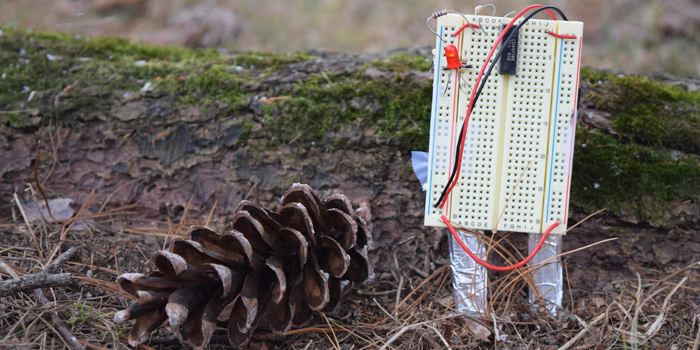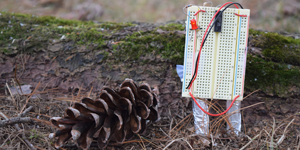Lesson Plans for Real-world Environmental Science
New Lesson Plans from Science Buddies enable middle and high school classroom discussions of environmental impact and hands-on exploration of sensor-based technologies that might make a difference. These STEM activities are perfect for schools with a Maker space!

When it comes to protecting the environment and reducing our impact, sensor-based technologies may be part of the solution. With sensors providing real-time monitoring, individuals, agencies, or scientists may be more aware of environmental issues and able to act more effectively in response to problems. Sensor-based tools may also be programmed to make changes and take action based on certain conditions. Better understanding sensor technologies and brainstorming ways in which sensor data can be effectively used is a critical first step, a step students can take with hands-on STEM exploration.
Mudslides in California
In 2017, wildfires in California caused mass destruction, burning more than 1.2 million acres. In October alone, fires in Northern California destroyed more than 199,000 acres. The damage caused by these fires did not end with the containment of the fires. Months later, the areas burned clear by fire resulted in conditions that led to extreme mudslides during heavy rains in January of 2018. According to CNN, "Protective brush on hillsides, which would usually be able to soak up floodwater, was consumed by fire, leaving little to no vegetation to prevent mudslides and debris flow." With nothing on the surface to help absorb the water, rains led to catastrophic mudslides. Could sensors be used to help assess mudslide conditions in the future? How could data be used to safely evacuate people in harm's way?
Thinking about these kinds of real-world issues and ways in which high-tech, sensor-based solutions may hold the key to improving processes and safety is at the heart of a set of new Science Buddies Lesson Plans.
STEM and the Environment
The Environmental Monitoring (grades 6-8) and Protecting Nature with Technology (grades 9-12) Lesson Plans are designed to help educators lead students in a Maker-inspired activity related to creating and using sensor-based circuits. The Lesson Plans are flexible in concept, allowing students and classes to choose specific environmental variables of interest and then explore and test circuits that could be used.
- In the Environmental Monitoring activity, middle school students think about human impact on the environment and work in groups to develop circuits that can measure specific environmental variables. As part of this project, students work in teams to brainstorm circuits that could be used to help detect presence or absence of water (or other conductive liquid); measure the pH, CO2, color, or turbidity of a liquid sample; or measure the brightness of a light source. As part of their exploration, students build and test a light sensor circuit, a conductivity meter, or a moisture detector.
- In the Protecting Nature with Technology activity, high school students use sensor technology to quantify human impact on the environment and brainstorm ways to use this information to protect the environment and reduce human impact. Possible areas of exploration include light pollution/air quality, water quality, electrical conductivity, and water levels.
Both Lesson Plans are NGSS-aligned and have been developed to allow a range of explorations that fit the standards. Designed for end-to-end support, these Science Buddies Lesson Plans include background information for teachers, guided questions for classroom discussion, and a grading rubric for assessing student presentations of their group projects.
Making Connections
Students interested in sensor-based technology may also be interested in the ways in which sensors could be used in agriculture. See The Color Code - Improving Agriculture with Color-smart Technology for more information.
Categories:
You Might Also Enjoy These Related Posts:
- Forces and Laws of Motion Lessons
- Curated STEM Resources for Teaching Science Units
- 15+ Plant Science Activities and Lessons / Teach Plant Biology
- 13 Activities and Lessons to Teach Potential and Kinetic Energy
- 200 Free Lesson Plans for Science and Engineering
- 2020 Nobel Science Experiments for K-12 Students
- Teaching Biotechnology at All Grade Levels
- Free STEM Lessons that Work Well for Remote Learning









